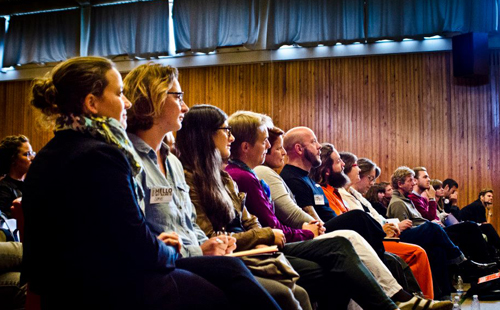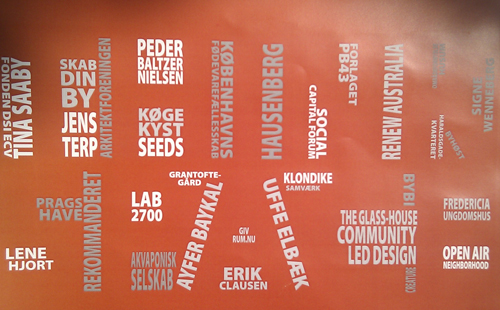Written by:
“The free thought is the best toy in the world.”
– Erik Clausen
We were pleased to accept an invitation to speak about The Glass-House’s role as an enabler of Community Led Design at the 2nd annual Think Space conference in Copenhagen, organised by Danish meanwhile use champions Givrum.nu.
Over three days, 350 regeneration practitioners, politicians, council officers, architects, university researchers, consultants and students from Denmark, Sweden and beyond explored ambitions, recent projects, approaches and tendencies within community engagement in changes to the built environment.
Think Space lived up to its name and provided a space to reflect and develop thinking.
Having grown up in Denmark, the context wasn’t too alien: council initiated, led and funded initiatives are very much the norm, complemented by a rich tradition of ‘foreninger’, very local interest and community organisations. The Danes have a rich tradition of democracy and engaged citizens operating within this system is per standard. However, engaging the broad spectrum of citizens (the ‘hard-to-reach’ groups of youth, elderly, young families and ethnic minorities) is a great challenge for councils, housing associations and community organisations alike.
Some creative initiatives, such as a Copenhagen Council-funded temporary physical intervention in Urbanplanen delivered by young practice Open Air Neighbourhood with Büro Detours as one of 15 temporary, experimental projects of the Skab Din By (Create Your City), enable residents to engage with their place through actively designing and building ‘prototypes’ of site-specific urban furniture. Prototyping seems to be a trend in place-making in Denmark, mostly delivered through government driven and funded initiatives.
Some community led and enabled projects stand out, but they are the minority. Prags Boulevard 43, a former lacquer factory in an industrial quarter in Copenhagen, was taken into meanwhile use by Givrum.nu with the intention of establishing community capacity to take over the running of the building for community use. Interestingly, Givrum.nu have taken on the role of a trail-blazing and capacity building agency, with no intention of remaining in the running of the project and are currently winding down their involvement.


Project initiative and governance was one of the key issues that kept appearing in presentations and discussions. In a context of centrally organised projects, how does one enable communities to have a real say and ownership? And how do you encourage communities to take initiative in areas where there are no community projects?
The language used ranged “how to activate local people” over “involving citizens in change” and “the knowledge held in local people” to “enabling initiativists”, revealing a broad spectrum of the approach of professionals to engaging with the communities they deal with.
“Are you part of the people or part of the administration?” asked Erik Clausen, Danish provocateur and cultural treasure, at Think Space. Well, as professionals we perhaps sometimes represent administration, but we are all part of the people. Let’s remember that when we all go back to the office to pick up our work, developing the built environment with people in mind as both collaborators and end users.
